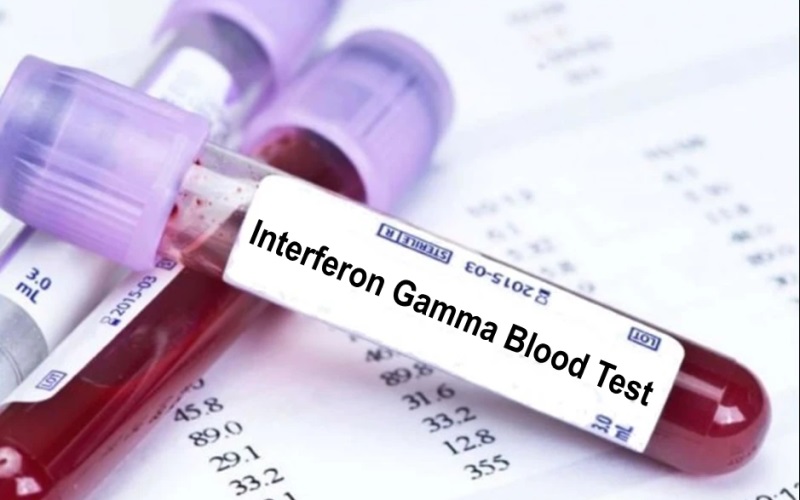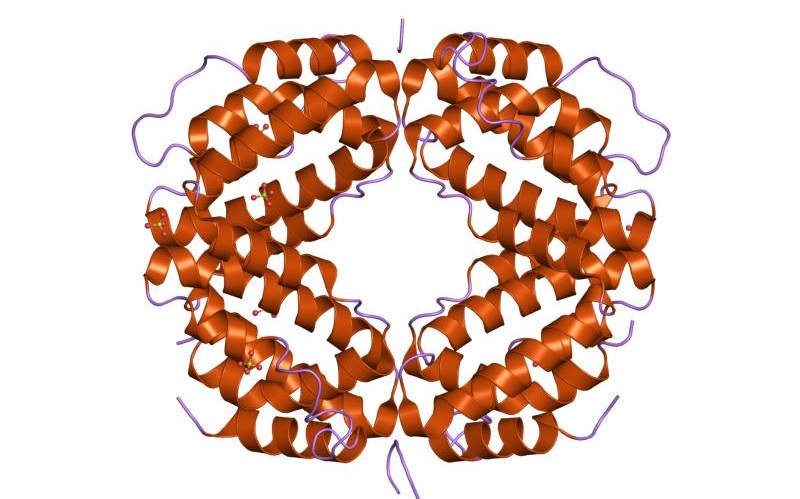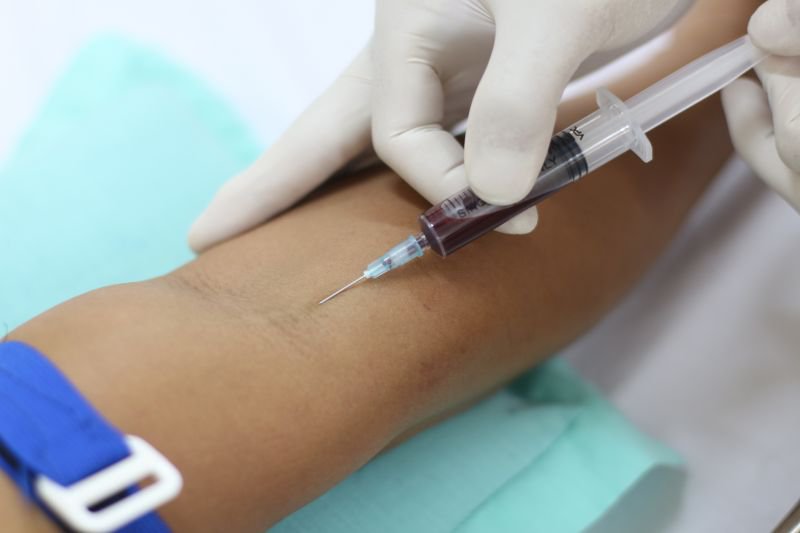Tuberculosis is an infectious disease that can be spread from person to person, causing unpredictable dangers if symptoms occur.
GRA Test – Tuberculosis (TB) blood test is a modern medical method having more accurate results compared with a transdermal blood test. The test helps detect tuberculosis bacteria (Mycobacterium tuberculosis) at stage no obvious signs and limits damage to the lung.
Risk of Tuberculosis Infection for Health

Tuberculosis is caused by the mycobacterium tuberculosis bacteria. This is a dangerous infectious disease spreading from person to person through secretions containing many bacteria of the patient. If you inhale tiny droplets from the coughs or sneezes of an infected person in the air containing the TB bacterium, you will be infected with TB bacteria, latent TB could develop into an active TB disease at a later date.
When TB bacteria enter the body, it does not just attack the lungs, can be spread through blood or lymph nodes, and then head other organs such as kidneys, brain, spine and damage it.
Tuberculosis includes 2 stages: latent TB disease and active TB disease.
Latent TB disease occurs when the TB bacteria can enter your body through inhalation (breathing into lungs) but being stopped by the immune system. The immune system is responsible for preventing the development of TB bacterium.
At the moment, TB bacteria are in a latent state (dormant stage) and there is no risk of infection, the patients who are infected have not developed any symptoms at all. So, they don’t realize any signs of illness until tuberculosis is developed or done by the IGRA Test.
Active TB disease occurs when the immune system fails to fight against the development of TB bacteria, being found with obvious signs such as a nagging cough that has been around for more than 3 weeks, blood in saliva, fever, night sweats, tiredness, chest pain, feeling short of breath and unreasonable weight loss.
If not found early, it can be difficult to treat, which leads to pleural effusion, coughing up blood, pneumothorax, etc. If an illness is prolonged, it can be fatal. Successful treatment still remains sequelae such as respiratory failure, bronchiectasis affecting the patient’s daily life.
The Common Screening Test for Tuberculosis

To detect TB bacteria, perform the screening test for tuberculosis as follows:
- Tuberculosis skin test: To measure the immune response to the TB bacteria by injecting a small amount of Tuberculin under the patient’s arm.
- AFB sputum test: Search for TB bacteria in a patient’s sputum sample under a microscope.
- IGRA test: Take a blood volume in the patient’s vein to analyze to check the presence of TB bacteria.
- Diagnostic imaging tests: Using x-ray results to check and detect abnormalities in the lungs.
What Are The Advantages of IGRA Test?
For people who have been BCG – vaccinated doing a blood test on the skin, it is not clear exactly how accurate the test result is, but perform the IGRA test, the result will be more accurate and pick out the wrong results if you have a poor immune system.
When you have latent TB disease, it means TB bacteria in the dormant stage to wait for a chance to act without any symptoms. Therefore, no way to detect illness until the immune system has weakened that allows bacteria to grow in your body.
IGRA test is the method that is capable of detecting tuberculosis in the talent stage. Also, its strength is to take a sample of blood can only be used once, which results typically take 24 hours, very quickly. The result is not false positive for atypical TB bacteria.
Who Should Get an IGRA Test?

TB test – IGRA test is the method applied to check for the presence of TB bacteria in your body for the subject following:
- People who have been vaccinated against BCG – Bacille Calmette – Guérin.
- People with limited time cannot examine enough times when checking for TB by the TB skin test method.
- People at risk for latent TB infection should have the IGRA test to screen for the following:
- People who regularly have close contact with patients with tuberculosis.
- Living in an area with a high rate of TB.
- People working in the medical environment are constantly in contact with many different subjects.
- People with poor immune systems or HIV infection.
TB test results may also be affected if a patient takes a TB test immediately after getting a vaccine within 4-6 weeks.
How Do I Understand IGRA Test Results?

The IGRA test is performed by taking a blood sample from the patient through an intravenous route. The blood sample will then be analyzed by measuring the immune system’s response to the TB bacteria.
Types of IGRA tests
– QuantiFERON® – TB Gold In-Tube test (abbreviated as QFT-GIT).
Negative result: This means that the TB bacteria were not found in the body. With this result, you are completely assured that you do not have latent TB disease, even if the previous result through the TB skin test was positive, the result is just a mistake due to the factors that affect you.
Positive result: This means the TB bacteria were found in the blood sample. Patients may be required additional tests in some cases to identify as a talent TB disease or active TB disease. To get the most accurate results, it is necessary to perform other tests such as Polymerase Chain Reaction (PCR), collect 3 sputum specimens to diagnose tuberculosis, TB culture test. When identifying a disease or condition, patients need to be consulted by a doctor to treat properly and promptly.
When getting a positive result, it does not mean that you have been infected with tuberculosis. There may be a potential stage, this is when the TB bacteria is in the body but the person is not experiencing any symptoms suggestive of TB disease.
According to medical statistics, 1/3 of the people tested for IGRA have a positive result but being latent TB disease.
What Does IGRA Test For?

IGRA test is used to diagnose TB infection. However, children under 5 years old should be measured across the TB skin test instead of the TB blood test.
The IGRA test is a significant medical test performed to aid in the diagnosis and detection of tuberculosis such as the following:
- This is one of the tests that help doctors distinguish between tuberculosis and lung cancer.
- Help to distinguish non-tuberculosis Mycobacterium (NTM) infection and tuberculosis (MT) infection in the case of patients with the same symptoms, which are confusing when diagnosing and treating.
- Early detection for children infected with tuberculosis.
- This is a test that contributes to differentiating between TB osteoarthritis and rheumatoid arthritis syndrome.
- Helps screen for tuberculosis to treat diseases related to the digestive tract, skin, and joints.
- It is especially meaningful to prepare patients for Organ transplantation or using biological drugs.
- Contribute to the detection of extrapulmonary tuberculosis such as TB osteoarthritis, scrofula, tuberculous meningitis, abdominal tuberculosis, testicular tuberculosis.
How Is TB Treated Today?
Today, with the advancement of the medical method, patients can be completely assured that tuberculosis has an effective treatment and positive recovery rate. The most important thing is to monitor disease status and avoid the risk of infection to the community.
For latent TB disease, often can be applied for preventive treatment to avoid getting TB disease later. Only when an infected person is sick, his/her weakened immune system, just needs special treatment and prevents TB bacteria from activating in the life of patients.
Depending on the patient’s condition, doctors can prescribe drugs to control and treat disease by taking several drugs for 9 months.
For active TB disease, using special monitoring methods in order to avoid the risk of transmission from one person to another due to exposure include sneezes, runny nose to where TB bacteria enter the air environment. The length of TB treatment will be 6 months for anti-tuberculous medicine to kill all the TB bacteria.
Tuberculosis Prevention: What To Know
It may sound like a disease of the past, but Tuberculosis or TB is still a real concern today and can be quite dangerous. So, learn more about how you can help prevent the spread of illness in the following ways:
- Get full vaccination, especially for young children.
- When in close contact with patients with pulmonary tuberculosis must apply safety measures such as wearing gloves, masks, not touching the open wound of the patient.
- Personal hygiene and a clean living environment prevent bacteria from spreading and sticking to surfaces.
- Do not share personal utensils and eat or drink with patients who have tuberculosis.
- Perform a TB test when you have close contact with a patient or suspect yourself may have a TB infection.
For patients with tuberculosis, there are also some issues to note:
- Consciously protect themselves and the community by wearing a mask when coming to a crowded place, not spitting indiscriminately …
- There is a reasonable diet to supplement nutrients to enhance resistance.
- Do not use stimulants, especially tobacco.

The IGRA Test is a method of great significance to screen tuberculosis in latent TB infection. This helps the treatment effectively and avoids causing serious effects to the health of the patient, especially in preventing the spread in society.
For more information about our test menu and price list, please click here.
The site cannot and does not contain medical advice. The medical information is provided for general informational and educational purposes only and is not a substitute for professional advice. Accordingly, before taking any actions based upon such information, we encourage you to consult with the appropriate professionals.

 1900 1717
1900 1717 